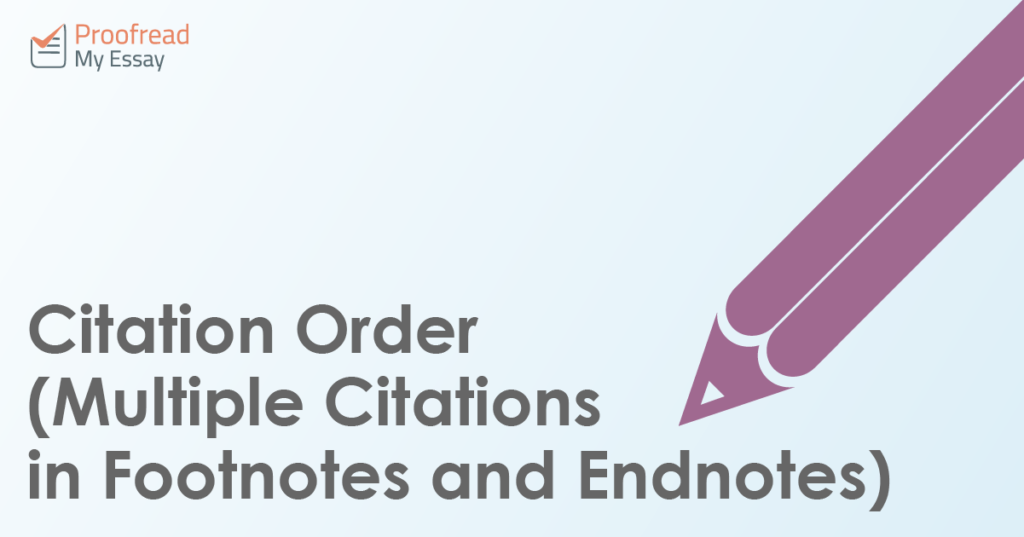If you are writing an essay, you need to back up your arguments with citations. In fact, you can even cite multiple sources to support the same argument! This is when citation order becomes crucial.
Different systems require different formats when citing more than one source in the same place. We have previously looked at how this works with author–date referencing. Here, though, we’re looking at the rules of citation order for referencing systems that use footnotes and endnotes.
Footnote Citation Order
With systems such as MHRA or Chicago referencing, you cite sources by placing source information in footnotes (with full publication information also given in a bibliography at the end of the document).
Generally, each source you reference should be cited in its own footnote. However, if you have several sources that support the same point in one passage of text, you can cite these in a single footnote.
To do this, separate each source in the footnote with a semicolon:
1. Alice Mikkelsen, Fake News and Real Lies (London: Toucan Inc., 2017), 151; Chris Skinner, On the Nature of Truth (New York: Bugle Books, 2012), 11-24.
Here we see a Chicago-style footnote with two sources by different authors. You should check your style guide for exact advice on citation order, though, as this can vary. Chicago referencing, for example, recommends two options for ordering sources in a footnote:
Find this useful?
Subscribe to our newsletter and get writing tips from our editors straight to your inbox.
- Alphabetically by author surname (same order as in the bibliography)
- In order of importance to the point you’re making
In the citation above, we have used the alphabetical approach, so Mikkelsen comes before Skinner.
Endnote Citation Order
Endnote referencing systems (e.g. IEEE) use a different number for each source. You should number sources in the order they are cited in the text, with full source information given in a bibliography.
Citing multiple sources in one place therefore simply involves giving all relevant source numbers:
Truth values can be codified using various methods [2], [6]–[7], [9].
In this IEEE-style reference, the author is citing the second, sixth, seventh and ninth sources from the reference list. As shown, in IEEE referencing, each source is given in square brackets: non-sequential sources are then separated with commas; sequential sources are indicated with a dash.
The exact presentation here can vary between systems. Some, for instance, may use a different style of brackets or list sequential sources within brackets (e.g. [5–8] instead of [5]–[8]). However, in terms of citation order, all endnote systems cite sources in numerical order.
